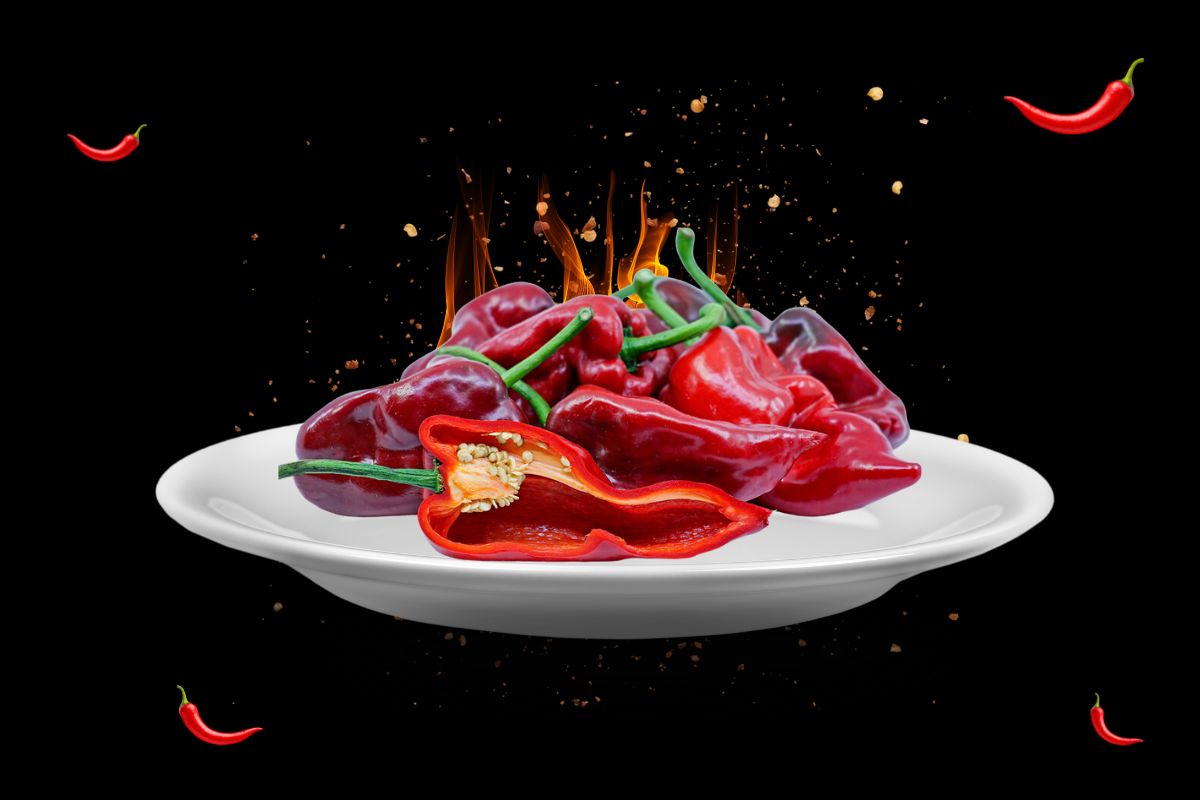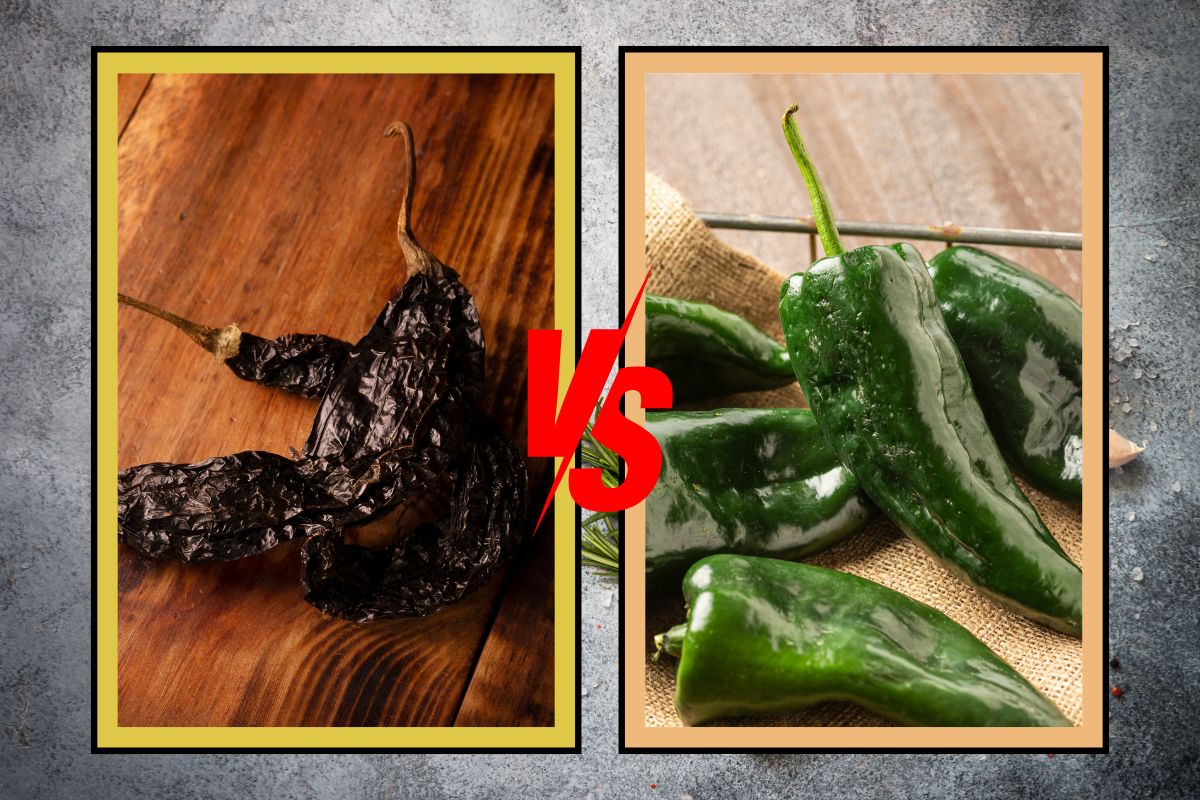Ugh, grocery shopping can be a jungle sometimes. All those peppers staring back at you, promising flavor and who-knows-what level of heat. Then there’s the “pasilla pepper” – sounds fancy, but is it just a fancy poblano? Hold on to your sombreros, pepper pals! Today, we’re clearing up the confusion of pasilla vs poblano. We’ll learn their secrets, the difference between Pasilla vs Poblano their strengths, and how to pick the perfect one for your next culinary masterpiece.
The OG Poblano: Mild and Mighty

Picture a deep green pepper, shaped like a heart and about the size of your hand. That’s the poblano, a staple straight from Puebla, Mexico (hence the name). This guy’s the star of chiles rellenos – those delicious stuffed peppers – and adds smoky magic to salsas.
Don’t let the “pepper” part fool you – poblanos are pretty mild, typically clocking in around 1,000 to 1,500 SHU (Scoville Heat Units). For reference, a jalapeno packs a hotter punch at 2,500 to 8,000 SHU. So, poblanos are perfect for adding a touch of warmth without setting your tastebuds on fire.
But poblanos have a hidden talent! They’re bursting with vitamins and minerals like vitamin C, potassium, and folate. Basically, they’re tiny nutritional powerhouses.
And here’s a cool bonus: when poblanos ripen to a deep red, they transform into another beloved pepper – the ancho. Anchos are dried poblanos with a richer, smokier flavor profile. So, next time you see “ancho chili powder” on a recipe, just remember, it’s basically dehydrated poblano goodness!
The Mysterious Pasilla: Unveiling the Chilaca

Now, let’s get to the bottom of this “pasilla” business. In some parts of the world, particularly Mexico and Latin America, “pasilla” actually refers to the dried form of a different pepper called the chilaca.
Chilacas are long and slender, looking almost like wrinkly raisins when dried. Their flavor is milder and fruitier than anchos, with a hint of sweetness that makes them stand out.
The Labeling Labyrinth: Pasilla vs Poblano
Here’s where things get a little tricky. In the US, grocery stores sometimes play a bit fast and loose with pepper names. You might see “pasilla” next to a picture of a poblano pepper. This is because they both share some visual similarities – both are dark green and slightly elongated. Plus, let’s be honest, “pasilla” sounds a bit more exotic than “chilaca.”
The key takeaway? Don’t trust the label blindly. If you’re unsure, take a good look at the pepper itself. Poblanos are broader and heart-shaped, while chilacas (the true pasilla) are long and slender.
Pasilla vs Poblano: A Culinary Tango
Now that we’ve cracked the pepper code, let’s explore how these two shine in the kitchen:
Poblano Power:
- Stuffing Champion: Poblanos are the undisputed kings of chiles rellenos. Their mild heat and large size make them perfect for stuffing with cheese, meat, or veggies.
- Salsa Sensation: Roasted poblanos add a touch of smoky depth to salsas, making your tastebuds do a happy dance.
- Soup Savior: Poblanos lend a delightful earthiness to creamy soups and stews, giving them a whole new level of flavor.
Pasilla Prowess:
- Mole Mastermind: Anchos (dried poblanos) is a crucial ingredient in the rich and complex flavors of mole sauce. It just wouldn’t be the same without them!
- Adobo Artist: Pasilla peppers, both fresh and dried, add a touch of sweetness and fruitiness to adobo marinades for meats and vegetables. They’ll leave your food begging for more.
- Chile Fix: Craving a smoky, subtle heat? Pasilla peppers are perfect for grinding into chili powder for a unique flavor twist. Take your chili game to the next level!
The Final Pepper-oni: A World of Flavor
Pasilla vs Poblano isn’t a battle, it’s a celebration of pepper diversity! Both offer unique flavors and culinary applications. So, the next time you’re at the grocery store, don’t be afraid to get your hands dirty (figuratively speaking) and inspect the peppers yourself. Ask the produce manager for clarification if needed. Remember, a little detective work goes a long way in creating delicious and exciting dishes that will have your friends and family raving.
Here’s a bonus tip: If you can’t find fresh chilacas (the true pasilla), you can substitute dried ancho peppers. Just rehydrate them in hot water for about 20 minutes before using. They won’t have the exact same flavor profile as fresh pasilla, but they’ll still add a smoky sweetness to your dish.
So, the next time you’re whipping up a fiery fiesta in the kitchen, remember the power of the pasilla and the poblano. With a little knowledge and a dash of adventurous spirit, you can explore a whole world of pepper possibilities!
Tags: pasilla vs poblanoPepperPoblano

